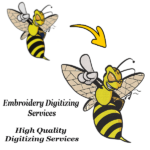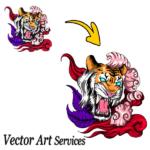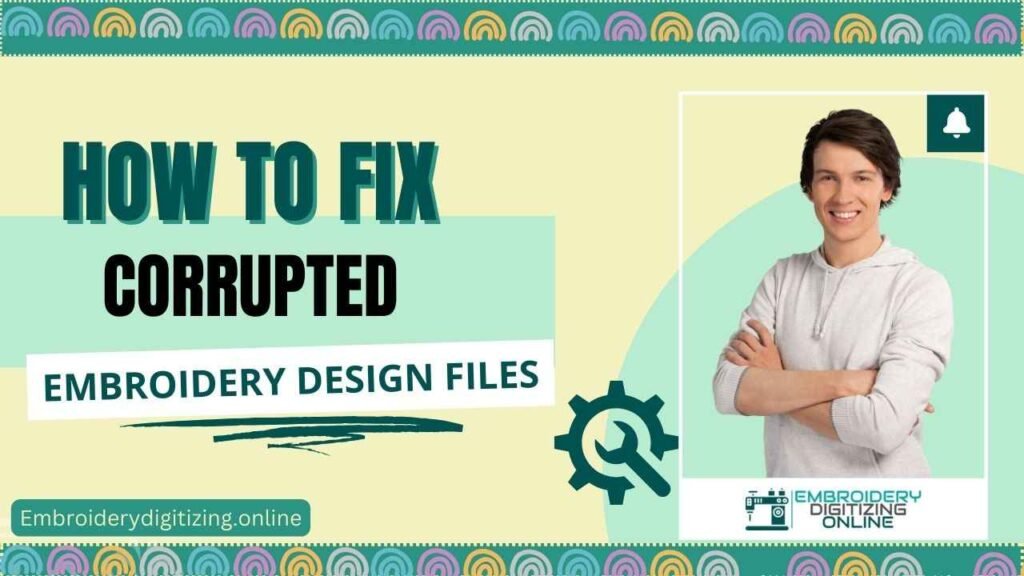Top 5 ways to lettering Embroidery with embroidery machine
Embroidery lettering, a craft steeped in tradition, meets modern convenience with the advent of embroidery machines. These machines open doors to creativity, offering a myriad of possibilities for personalization and artistic expression.

Overview Of lettering Embroidery with embroidery machine
In this guide, we delve into the top five methods to excel in embroidery lettering, catering to both beginners and seasoned enthusiasts alike. Understanding the capabilities of your sewing machine and embroidery machine is paramount. Delve into its settings, experiment with fonts, and grasp how each parameter influences your lettering outcome.
Alongside, mastering essential embroidery stitches for letters such as satin, backstitch, and stem stitch provides the foundation for impeccable letterforms and diverse embroidery letter patterns. Through diligent practice and exploration, you’ll unlock the potential to infuse your projects with personalized charm and intricate detailing, elevating your embroidery game to new heights.
Table of Contents
How To Lettering with Embroidery Machines ?

Embroidery lettering with machines is easier than you might think! To get started, first, get to know your embroidery machine well. Understand its settings, like the fonts it offers, and play around with different stitch sizes to see how they affect your letters. Don’t forget to adjust things like thread tension and hoop size for the best results.
Once you’re comfortable with the technical side, let your creativity flow! Try out different lettering styles and patterns. Mix and match stitches and decorations to create your unique designs. As you dive into lettering with embroidery machines, don’t worry about making mistakes. They’re all part of the learning process! Experiment, have fun, and soon you’ll be crafting beautiful embroidered letters that add a special touch to anything you create. Whether it’s clothing, accessories, or home decor, embroidery lettering can turn the ordinary into something extraordinary with just a few stitches.
If you’re looking for a top-quality embroidery design digitizing & vector art service, look no further than ours! With quick turnaround times and excellent quality, we’re the perfect choice for anyone looking for a reliable and affordable option.
Get 50% OFF On Your First Order Always get a preview before you pay so that you know exactly what your design will look like. We guarantee you won’t be disappointed!
5 ways to embroidery lettering With Embroidery Machines

Let’s delve into more detail for each of the 5 best embroidery lettering techniques with embroidery machines:
Chian Stitch

The chain stitch is a classic embroidery technique that creates a series of interlocking loops resembling a chain. To create chain stitch lettering, you’ll start by bringing the needle up through the fabric and then inserting it back down into the same hole, forming a loop.
As you pull the thread through, catch the loop with the needle to secure it, and continue this process to form a chain of stitches. Chain stitch lettering is versatile and can be used for both simple and intricate designs, making it a popular choice for adding decorative elements to embroidery projects.
Stem Stitch:

Stem stitch is characterized by its smooth, rope-like appearance, making it perfect for outlining letters or adding detail within them. To create stem stitch lettering, you’ll bring the needle up through the fabric and take a small stitch forward.
Then, bring the needle back up through the fabric, but slightly ahead of the first stitch, and pull the thread through. Repeat this process, keeping the stitches slightly angled and overlapping, to form a continuous line of stitching. Stem stitch lettering is often used for script fonts or when you want to give your embroidery a hand-drawn look.
If you’re looking for a top-quality embroidery design digitizing & vector art service, look no further than ours! With quick turnaround times and excellent quality, we’re the perfect choice for anyone looking for a reliable and affordable option.
Get 50% OFF On Your First Order Always get a preview before you pay so that you know exactly what your design will look like. We guarantee you won’t be disappointed!
Split Stitch

Split stitch is a versatile embroidery technique that adds texture and dimension to lettering. It involves splitting previous stitches with the needle, creating a line of stitching that resembles a braid.
To create split stitch lettering, you’ll start by bringing the needle up through the fabric and taking a small stitch forward. Then, insert the needle back down through the center of the previous stitch and split the thread, bringing the needle up through the fabric again to create the next stitch. Repeat this process, keeping the stitches close together, to form a solid line of stitching. Split stitch lettering is great for adding visual interest to embroidery projects and works well for both simple and intricate designs.
Running Stitch:

Running stitch is one of the simplest and most versatile embroidery stitches, consisting of straight stitches made in a line. To create running stitch lettering, you’ll bring the needle up through the fabric and take a small stitch forward.
Then, insert the needle back down through the fabric a short distance away and repeat this process to form a line of stitches. Running stitch lettering can be varied by adjusting the length and spacing of the stitches, allowing you to create different effects and textures. It’s often used for outlining letters or filling in large areas of lettering and is suitable for both simple and complex designs.
Satin Stitch

Satin stitch is a popular technique for filling in shapes with smooth, solid lines of stitching, creating a glossy and luxurious finish. To create satin stitch lettering, you’ll bring the needle up through the fabric and insert it back down again, close to where you started, to form the first stitch.
Then, bring the needle up through the fabric again, slightly to the side of the first stitch, and insert it back down close to where you started to form the next stitch. Continue this process, stitching closely together to fill in the shape completely. Satin stitch lettering is perfect for creating bold and vibrant letters that stand out on fabric, and it’s often used for adding text to embroidery projects such as monograms or logos.
Conclusion
In conclusion, mastering lettering with embroidery machines opens up a world of creative possibilities for both hobbyists and professionals alike. From the classic charm of chain stitches to the bold elegance of satin stitches, each technique offers its own unique flair to enhance embroidery projects. By embracing these methods and experimenting with different styles and patterns, enthusiasts can infuse their creations with personalized charm and artistic expression.
Furthermore, the integration of digitized embroidery into various sectors such as fashion, interior design, and advertising unveils new avenues for businesses to explore. With services like embroiderydigitizing.online providing efficient and affordable digitizing solutions, businesses can confidently embark on this journey of innovation, knowing they have the tools and support to elevate their projects to new heights. Whether it’s adding a custom touch to clothing, enhancing interior décor, or creating eye-catching advertisements, embroidery lettering with machines offers endless opportunities for creativity and customization.
If you’re looking for a top-quality embroidery design digitizing & vector art service, look no further than ours! With quick turnaround times and excellent quality, we’re the perfect choice for anyone looking for a reliable and affordable option.
Get 50% OFF On Your First Order Always get a preview before you pay so that you know exactly what your design will look like. We guarantee you won’t be disappointed!
FAQ's
It depends on preference. Popular styles include satin stitch for boldness, stem stitch for a hand-drawn look, and chain stitch for elegance.
Hand embroidery techniques like satin stitch, backstitch, and split stitch, or using embroidery machines with built-in fonts or digitized designs.
Input text using built-in fonts or digitized designs, then adjust size, spacing, and alignment settings for even spacing and correct alignment.
It depends on the project. Serif fonts like Times New Roman for classic elegance, sans-serif like Arial for modernity, script for decorative touch, and block for boldness.
Choose legible fonts and thread colors, pay attention to spacing and alignment, use stabilizers to prevent puckering, and practice proper tension and stitch settings.












